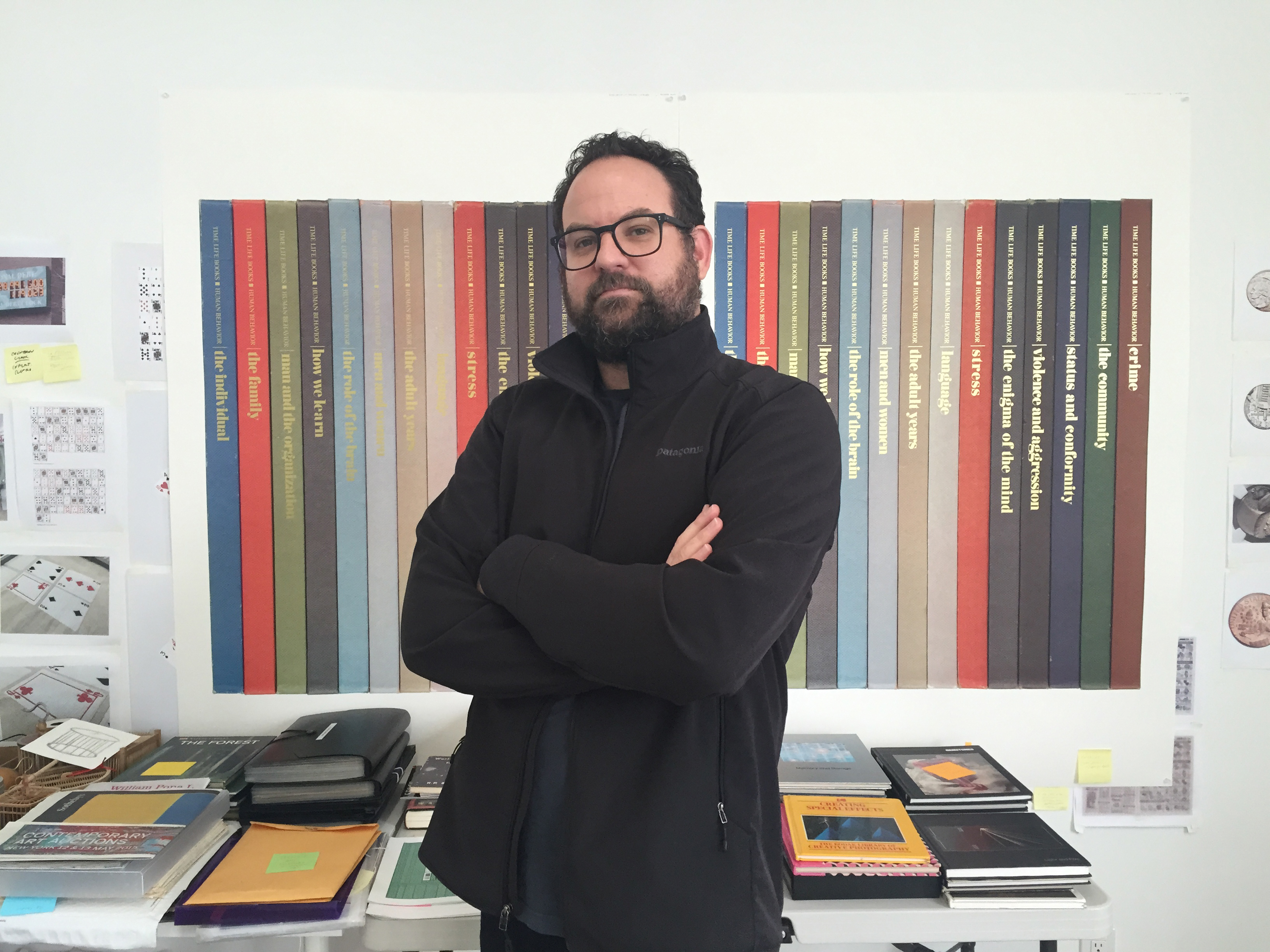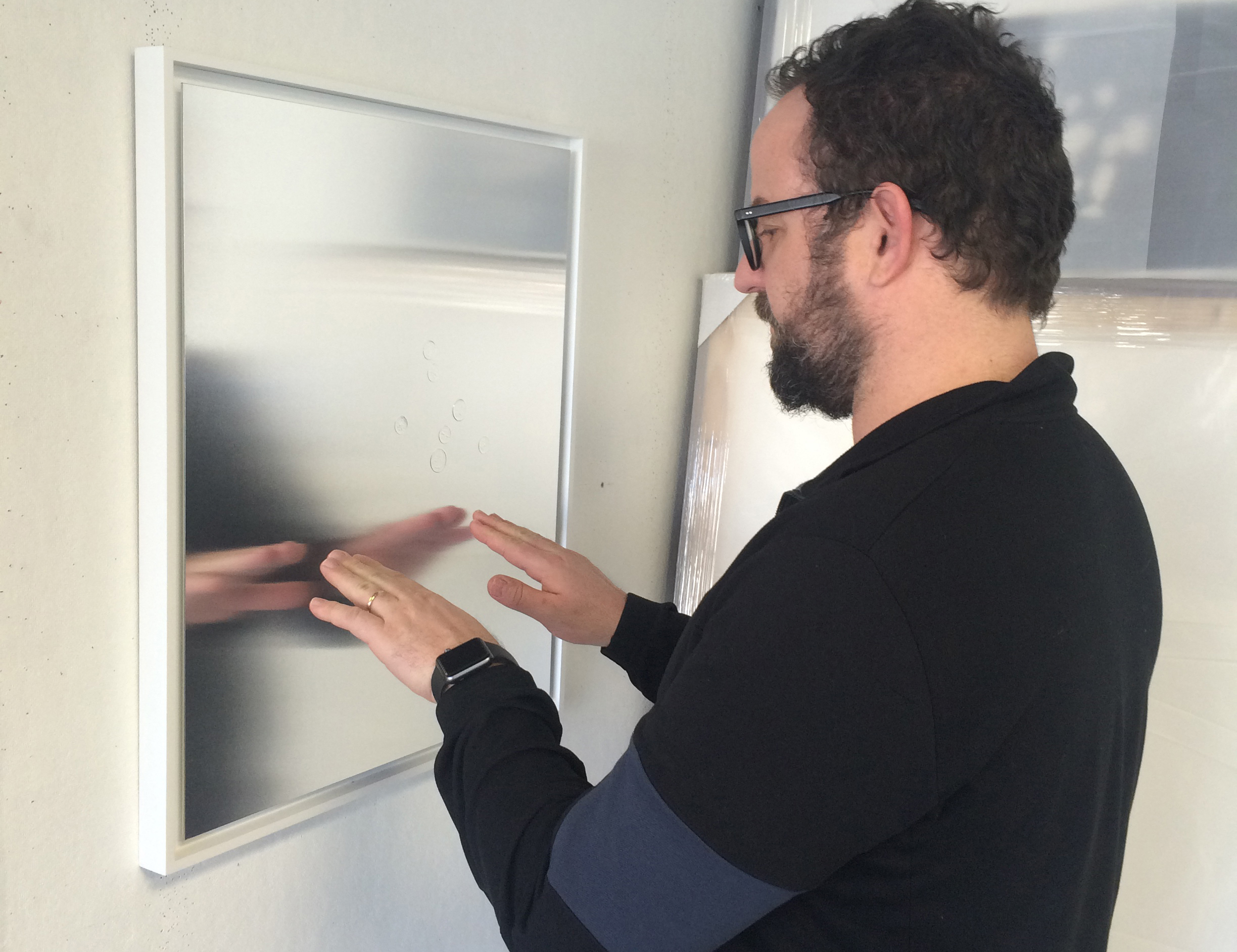
Born 1969, Woodland, California
“I sorta got into art through comic books,” Mungo Thomson has said. “I wanted to grow up to draw comics.”1 He was raised in Davis, California, where his father was a psychiatrist and his mother was a California state assemblywoman and member of the Yolo County Board of Supervisors. His family is Scottish; the name Mungo belonged to a Scottish saint who founded the city of Glasgow.2 Thomson has said he gained a “certain cultural vocabulary” from the Unitarian church his family attended, his academic surroundings (Davis has a University of California campus), and the free-spirited, spiritually inquisitive milieu of Northern California.3 He went to the University of California, Santa Cruz (BA, 1991), and the Whitney Museum of American Art Independent Study Program in New York (1994). Thomson wanted his art to be about making connections in the greater world, which led him to conceptualism. Unlike the California conceptual artists of the 1960s and 1970s, however, he wanted to engage the public and popular culture in his work. For his thesis project at the University of California, Los Angeles (MFA, 2000), he created a comic book from his graduate school journal entries and placed free copies in airports, in the style of religious pamphlets.
An early major influence was the much-loved conceptual artist John Baldessari (1931–2020), who became Thomson’s mentor at UCLA. “To me, John has been able to somehow balance intellectual inquiry with a desire to be entertained,” he has said.4 Thomson’s works include a giant boulder-shaped helium balloon for the Aspen (Colo.) Art Museum in 2012 (a reference to Michael Heizer’s 340-ton granite rock at the Los Angeles County Museum of Art); a stack of Amazon boxes made of bronze and titled Snowman (2020); and a wall of five hundred foam yoga bricks (2004). He is also interested in the periphery, in pointing out things we take for granted. In 1999, he removed the music from every live Bob Dylan recording from 1963 to 1995 and made a CD of the applause and repartee. To make the thirty-four-minute video The American Desert (for Chuck Jones), 2002, he excised Road Runner and Wile E. Coyote from the classic Warner Bros. cartoons, refocusing on creator Jones’s fantastical backgrounds. Crickets (2012) was an orchestral concert of cricket sounds. Thomson likes when his pieces create momentary confusion or slowly reveal themselves, like an installation at the 2008 Whitney Biennial in New York, in which he populated the museum’s coat check with 1,200 tuned, hanger-shaped chimes.

His work has appeared in such shows as “Among Others: Photography and the Group” (2019), Morgan Library and Museum, New York; “Stories of Almost Everyone” (2018), Hammer Museum, UCLA; “Wall, Window or Bar Signs” (2014), Kadist Art Foundation, San Francisco; Pacific Standard Time festival (2012), Los Angeles; “Time, People, Money, Crickets” (2013, 2015), SITE Santa Fe, New Mexico, and other venues; Istanbul Biennial (2011); “Realisms” (2008), Hirshhorn Museum and Sculpture Garden, Washington, D.C.; Le Havre Biennial of Contemporary Art, France (2008); Bienal de Arte, Panama City (2008); Berlin Biennale for Contemporary Art (2006); and Bienal Internacional de Cuenca, Ecuador (2004). Thomson lives in Los Angeles with his wife, the artist and filmmaker Kerry Tribe.
—Marla J. Kinney
Notes
“Hammer Lectures: Mungo Thomson,” Hammer Museum, UCLA, video, 53:38, from a lecture given September 29, 2008, posted March 10, 2009, https://www.youtube.com/watch?v=5OMBfbM7je4. ↩︎
Mungo Thomson, email correspondence with the author, April 2020. ↩︎
Nigel Prince, interview with Mungo Thomson, in Martin Herbert, “Mungo Thomson: Time People Money Crickets,” SITE Santa Fe and Contemporary Art Gallery, Vancouver, Canada, 2013. ↩︎
Adam Carr, “Between Projects: An Interview with Mungo Thomson,” Uovo, November 2006, p. 114. ↩︎